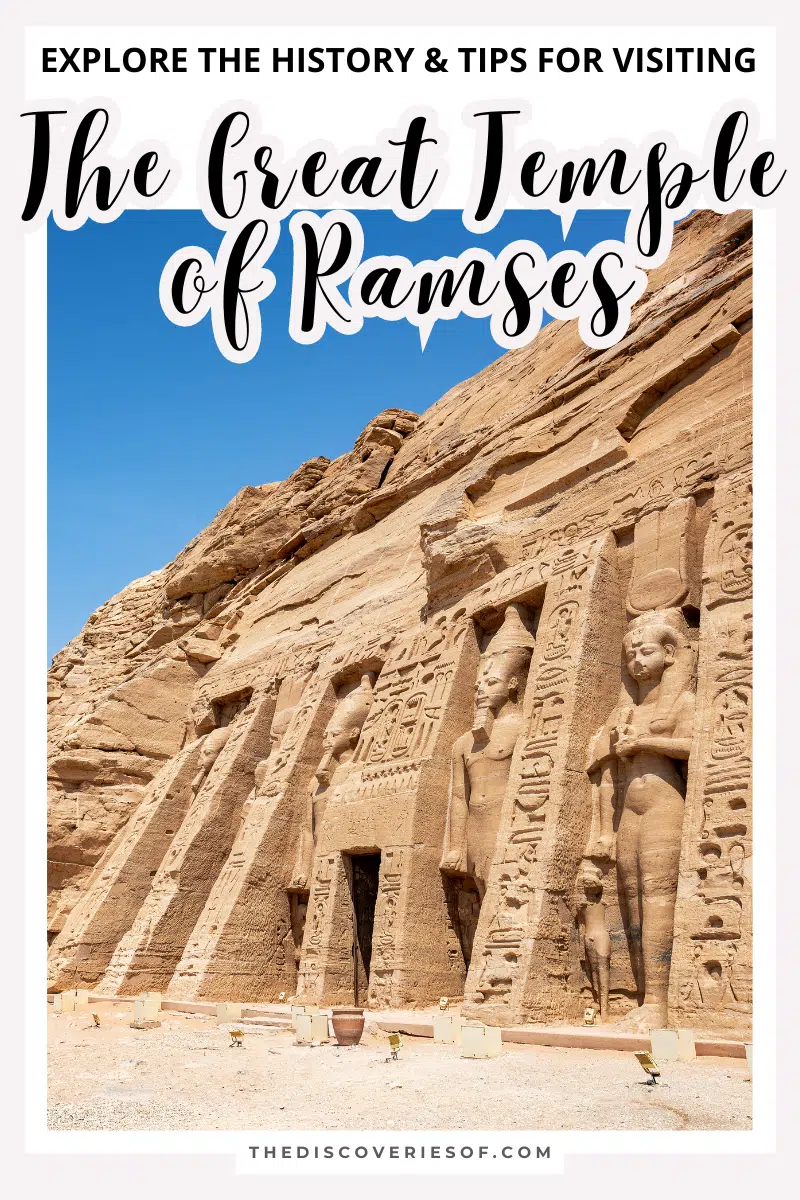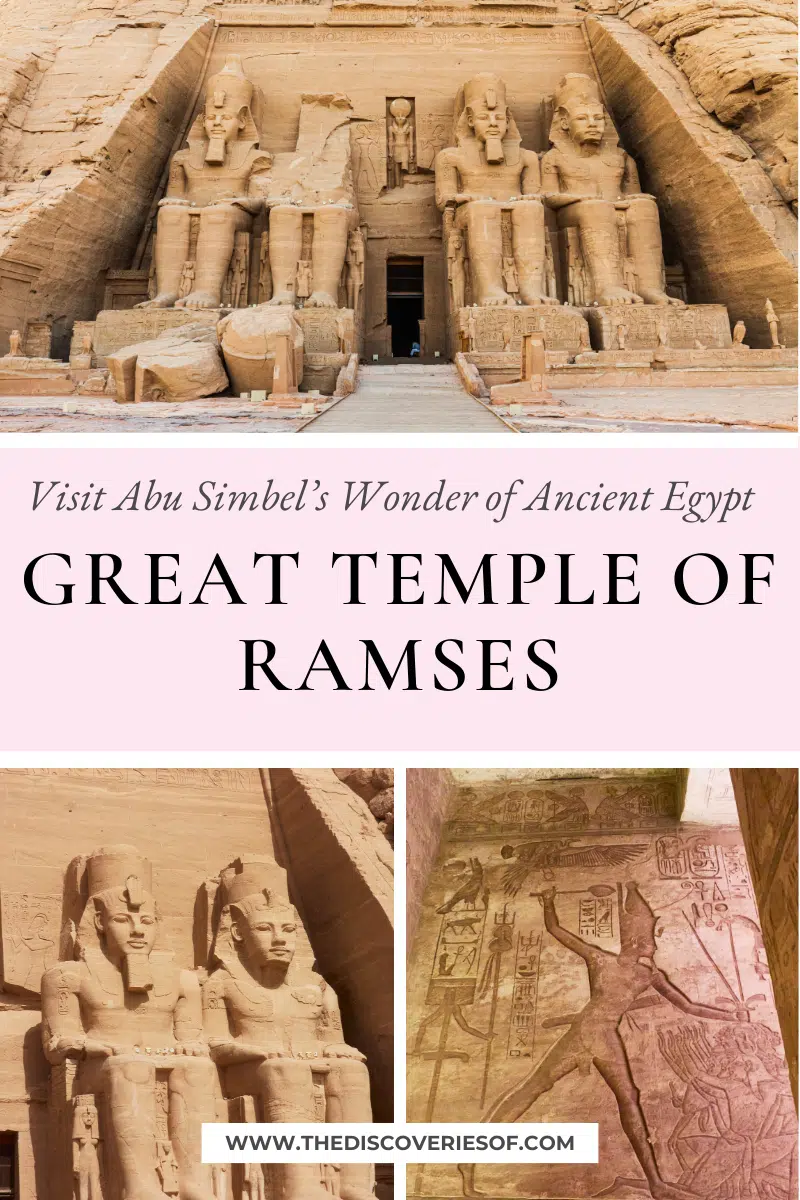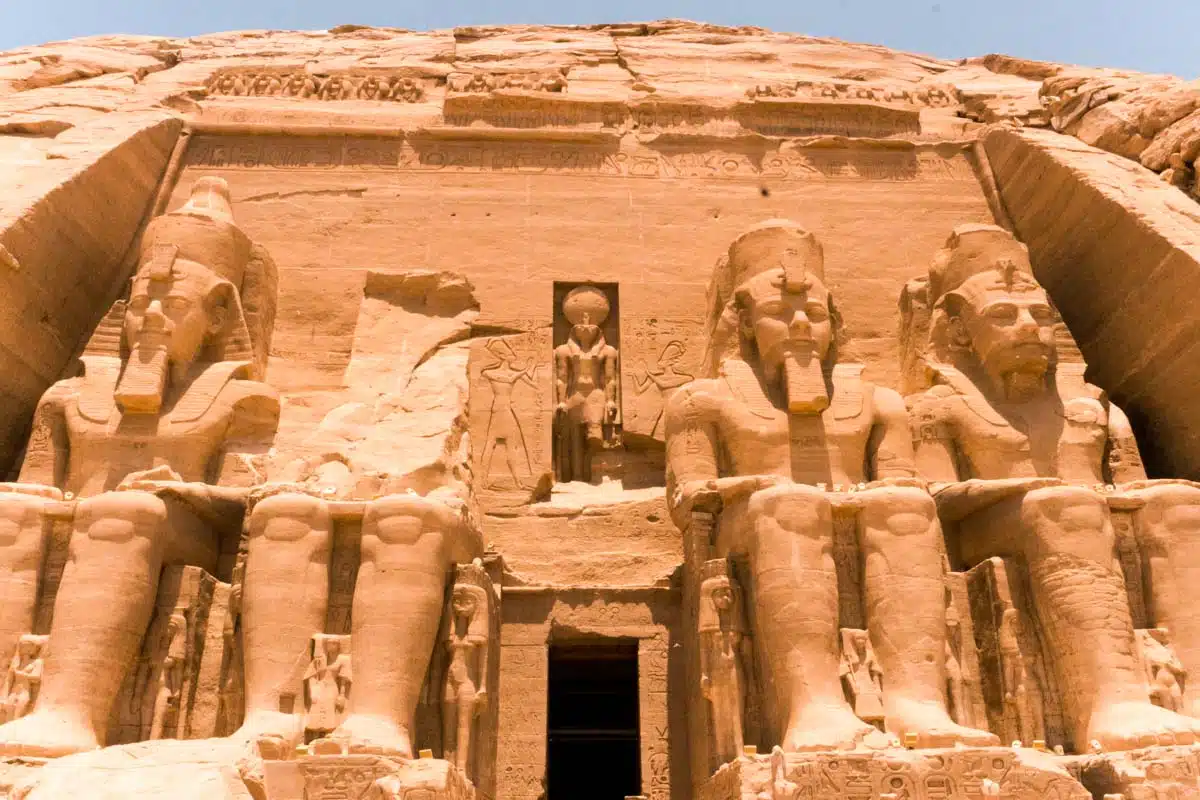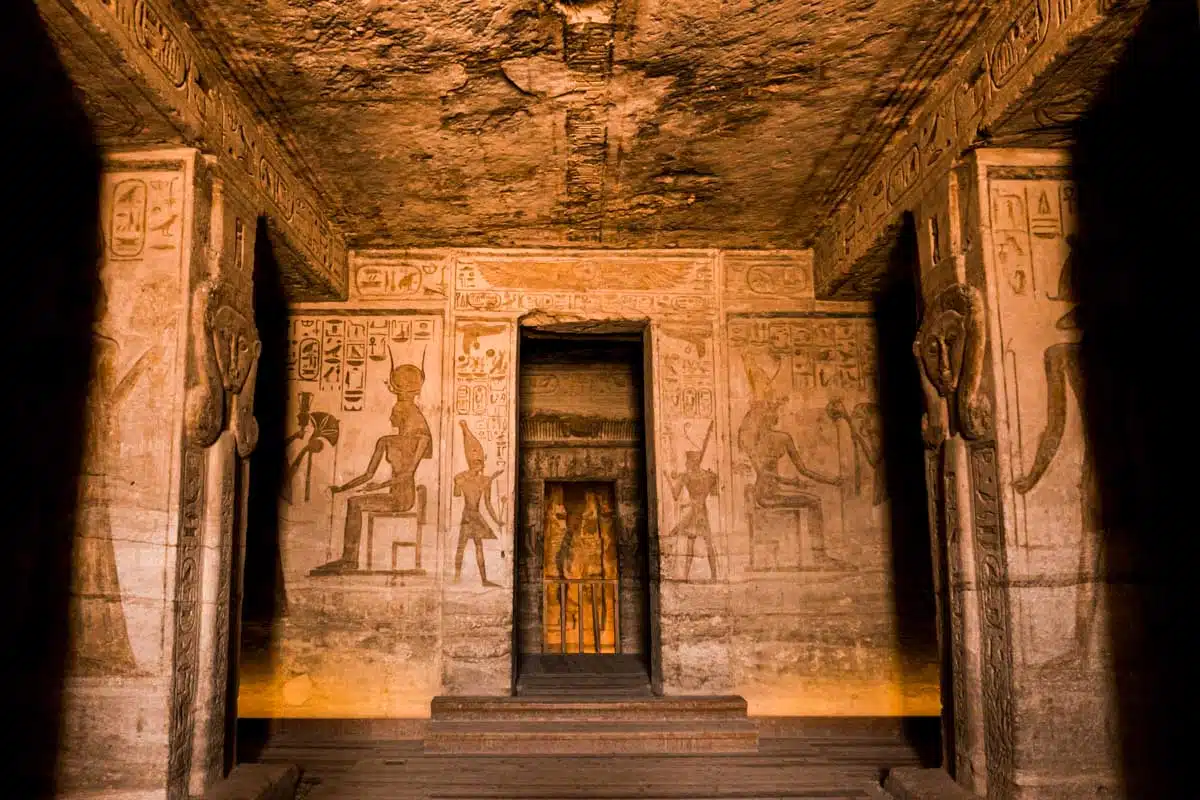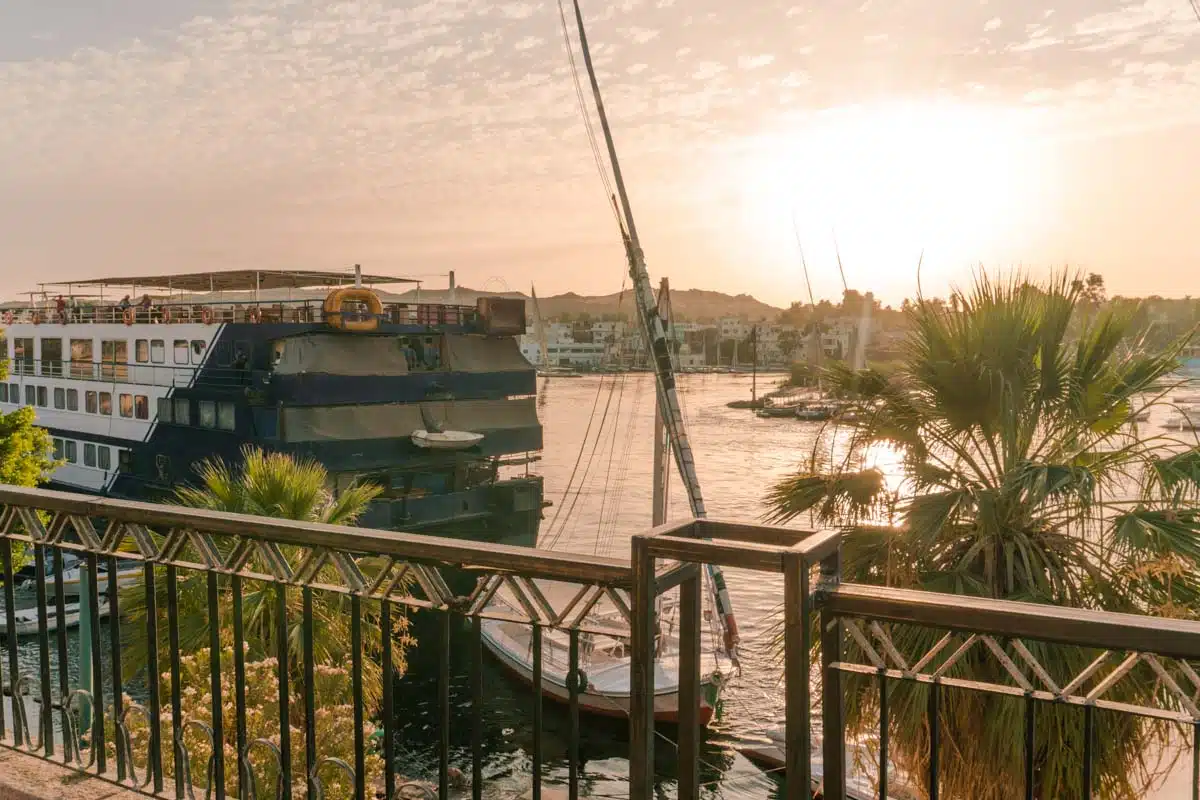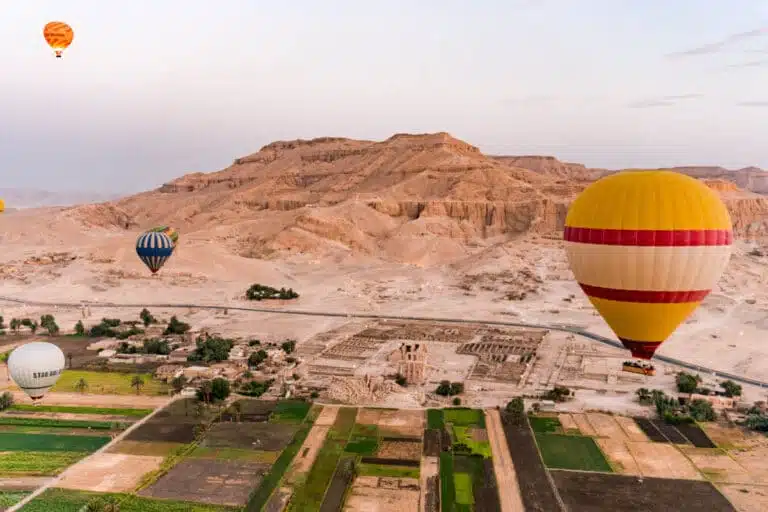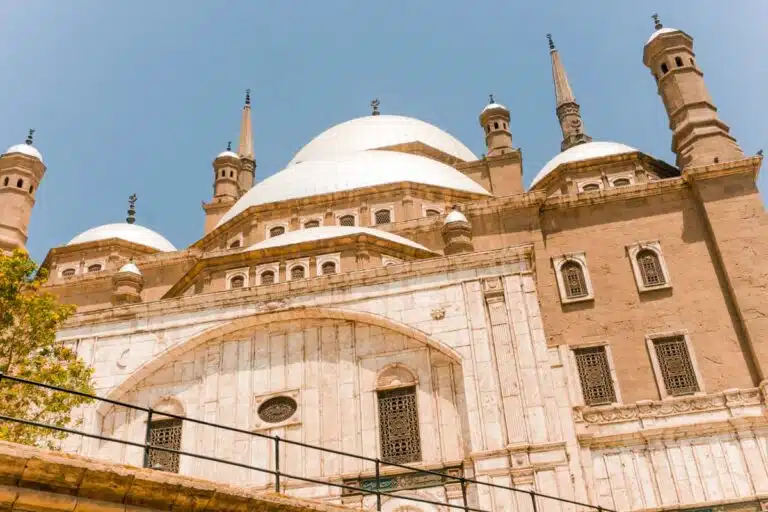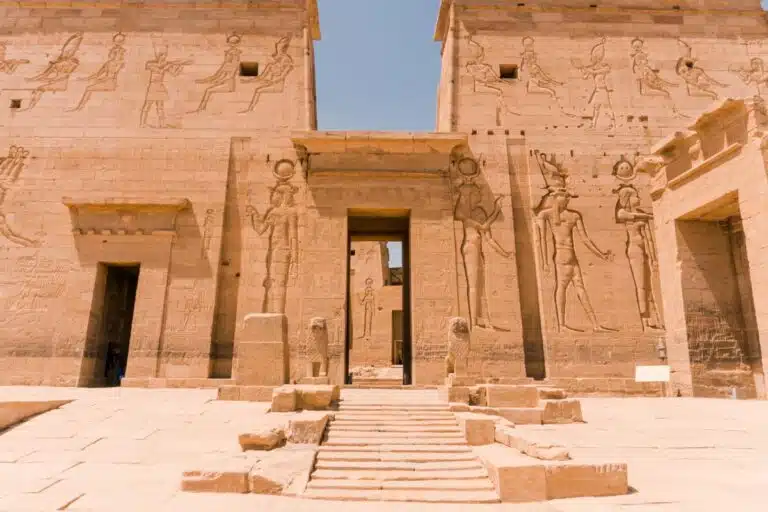The Great Temple of Ramses II is one of the wonders of Ancient Egypt – an incredible structure that forms part of the Abu Simbel complex. Delve into the history of this fascinating landmark, along with top tips for planning your visit.
Even among Egypt’s proliferation of striking landmarks and historic sites, The Great Temple of Ramses II stands out.
This must-visit temple forms part of the wider complex at Abu Simbel, facing what used to be Ancient Nubia and tells a story of one of Egypt’s greatest rulers Ramses II.
It was perhaps the destination I was most intrigued about seeing before my most recent trip to the country. Where previously I’d stayed relatively far north, delving into Cairo and Luxor, I was finally going down to Aswan and then on to Abu Simbel.
The reality did not disappoint. Among the many incredible temples in Egypt, this one lives up to its name with its jaw-dropping splendour.
Ready to find out more? Let’s go.
Why Visit the Great Temple of Ramses II
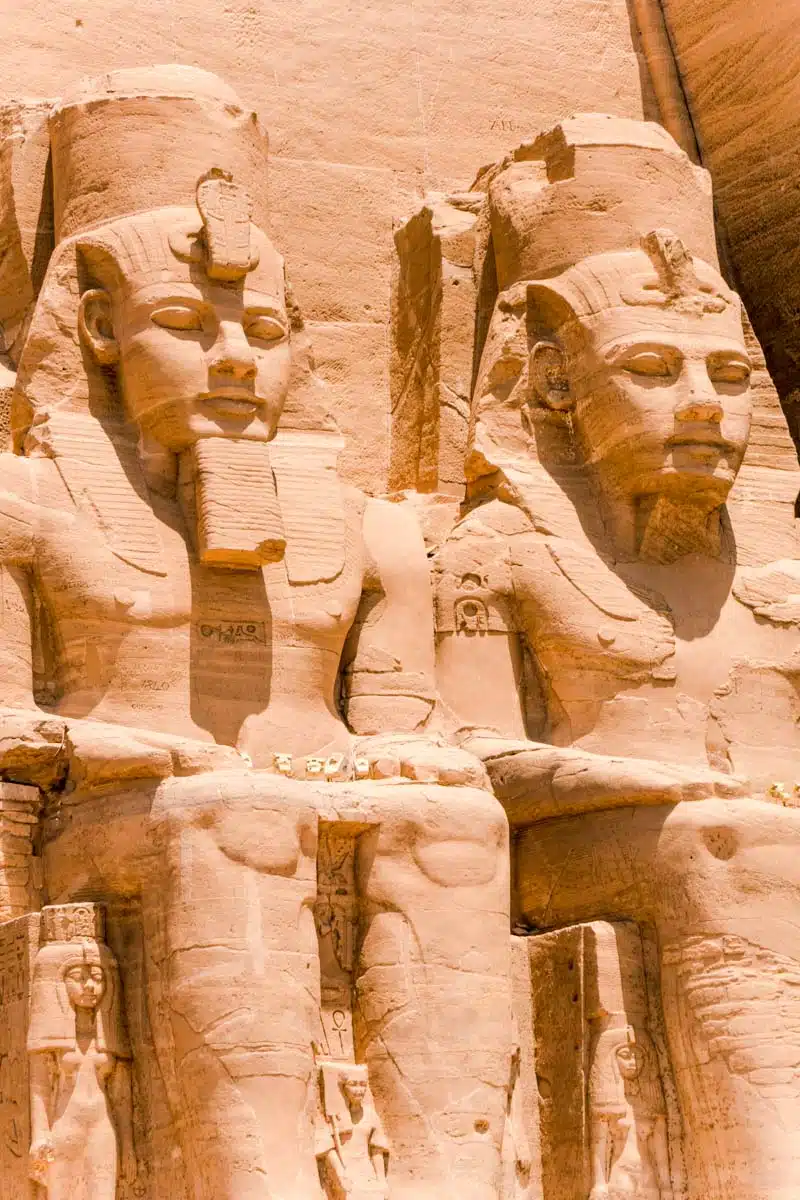
Why should you visit the Great Temple of Ramses II?
To put it simply, to understand Ancient Egyptian history, you need to understand Ramses II, and nowhere is his influence better seen than at this Egyptian relic.
Sure, the nearly 3,000 of the Ancient Egyptian civilisation left many well-preserved temples that are still visible today, ones built in a diverse range of architectural styles and trends but Abu Simbel, and with it, the Great Temple, stand unique.
History of the Temple
Conception and Construction
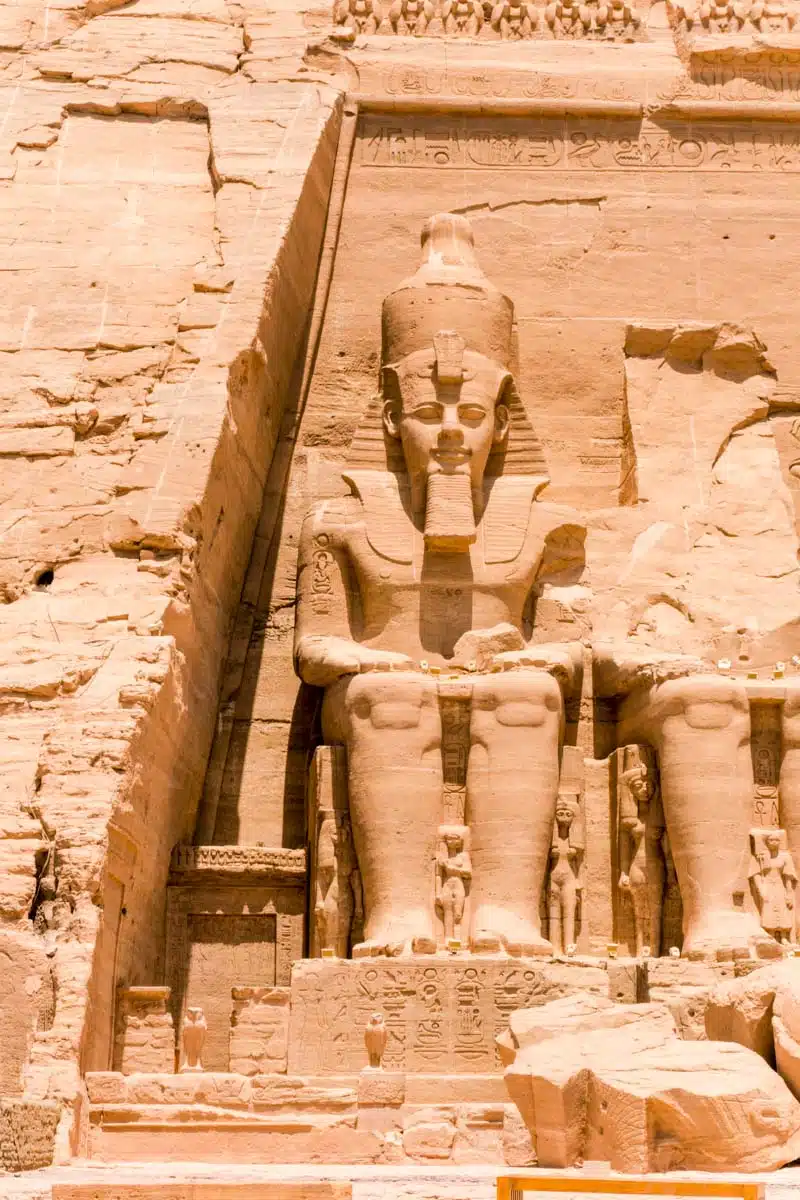
Ramses II was one of Egypt’s great rulers – a pharaoh under whose rule the country flourished, conquering neighbouring countries and building on its reputation as a formidable force in the region.
Though he was many things – warrior, ruler, dedicated husband – Ramses was never coy about letting everyone know of his accomplishments. During the course of his rule, he embarked on a widespread building campaign – with Abu Simbel at its zenith – to such an extent that Egyptologists have nicknamed him “the great chiseller” thanks to the number of places he had erected depicting his great deeds.
Even so, The Great Temple is special. Ramses had the temple erected for several reasons – among them to commemorate his victory at The Battle of Kadesh (a battle that’s duly represented on the great temple’s walls). The purpose of its location was two-fold – the site was sacred to the goddess Hathor, but also by building a temple on the border of then Nubia, it was also to remind his enemies of his might.
The Great Temple of Ramses II was carved out of the mountain on the west bank of the River Nile over 20 years between around 1264 and 1244 BC. The temple was fronted by four colossal statues of the Pharaoh and served as a symbol of Ramses II’s unquestionable power and strength.
Top Tip
Although four statues of Ramses II guarded the entrance to the temple, the temple is also dedicated to the sun gods Amon-Re, Ptah, and Re-Horakhty.
Subsumed by Sand
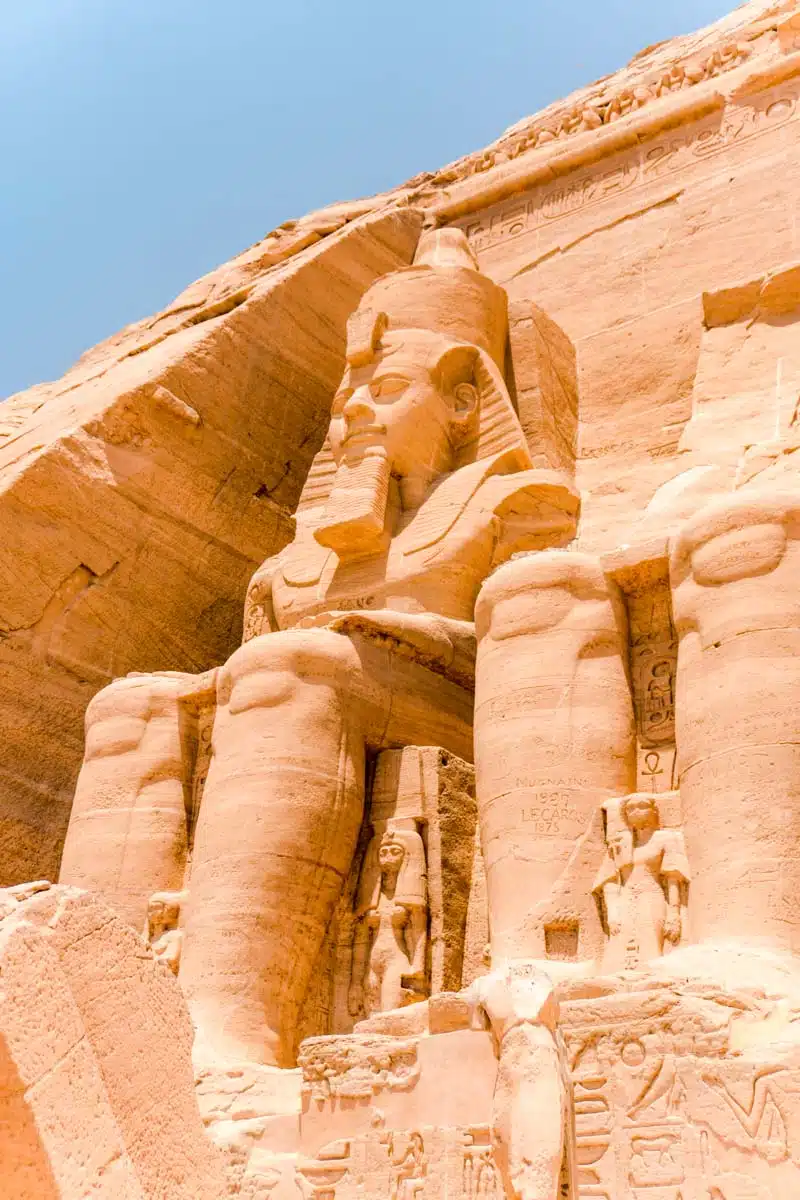
As time passed, and with the temple largely disused, the shifting sands from the surrounding desert began to cover the statues outside the main temple. By the 6th century BC, the sand was already knee height – a trend that continued throughout the centuries until the Great Temple and its smaller sibling the Temple of Hathor were subsumed and then forgotten.
Rediscovery
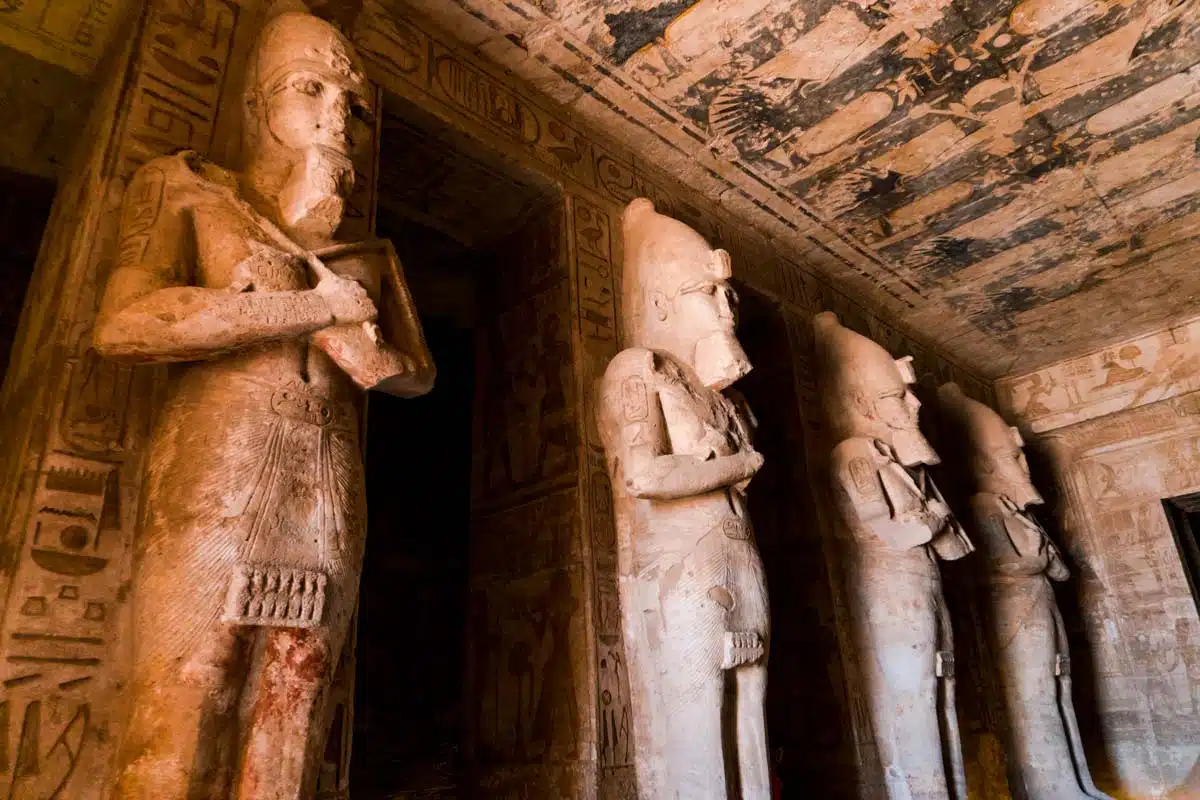
The Great Temple was largely unknown in European circles until March 1813, when the small temple and top frieze of the Great Temple were discovered by the Swiss researcher Johann Ludwig Burckhardt.
Over the next four years, several attempts to dig out an entry to the Great Temple were made, with Italian Giovannie Belzoni finally succeeding in 1817.
Relocation
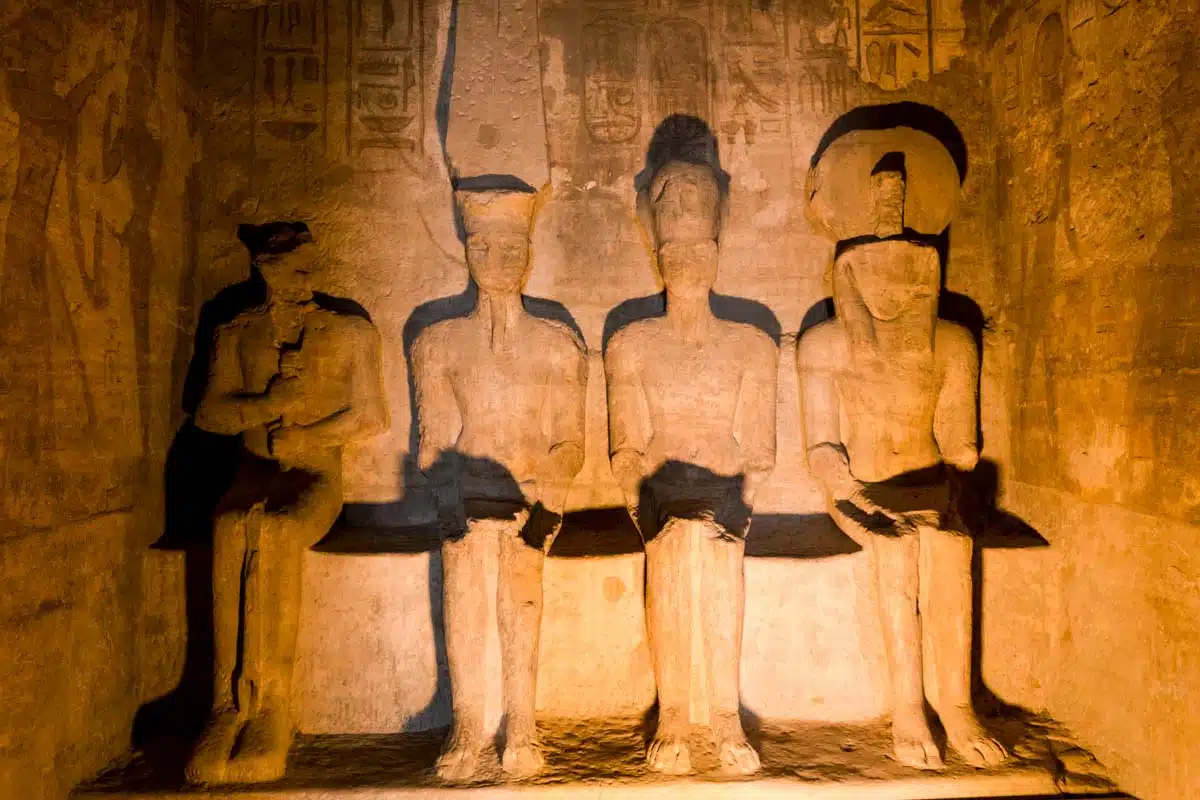
You’d think that being lost for millennia would be the last of the temple’s woes, but a far greater threat loomed in the sixties when the building of the Aswan High Dam put the Great Temple in danger due to the Nile’s rising water levels.
Were the temple to have been left where it was, it would have been submerged underwater – lost again to time, but this time permanently.
To avoid this, UNESCO launched a large-scale exercise to salvage the temples at Abu Simbel, including the Great Temple, and move them 65 metres higher and 200 metres farther away from the fast-rising Nile.
As part of this operation, which took place in the late 1960s, the entire site was carefully cut into large blocks that were then dismantled, lifted to their new location and painstakingly reassembled. The result is the site you see today.
Top Tips for Planning Your Visit
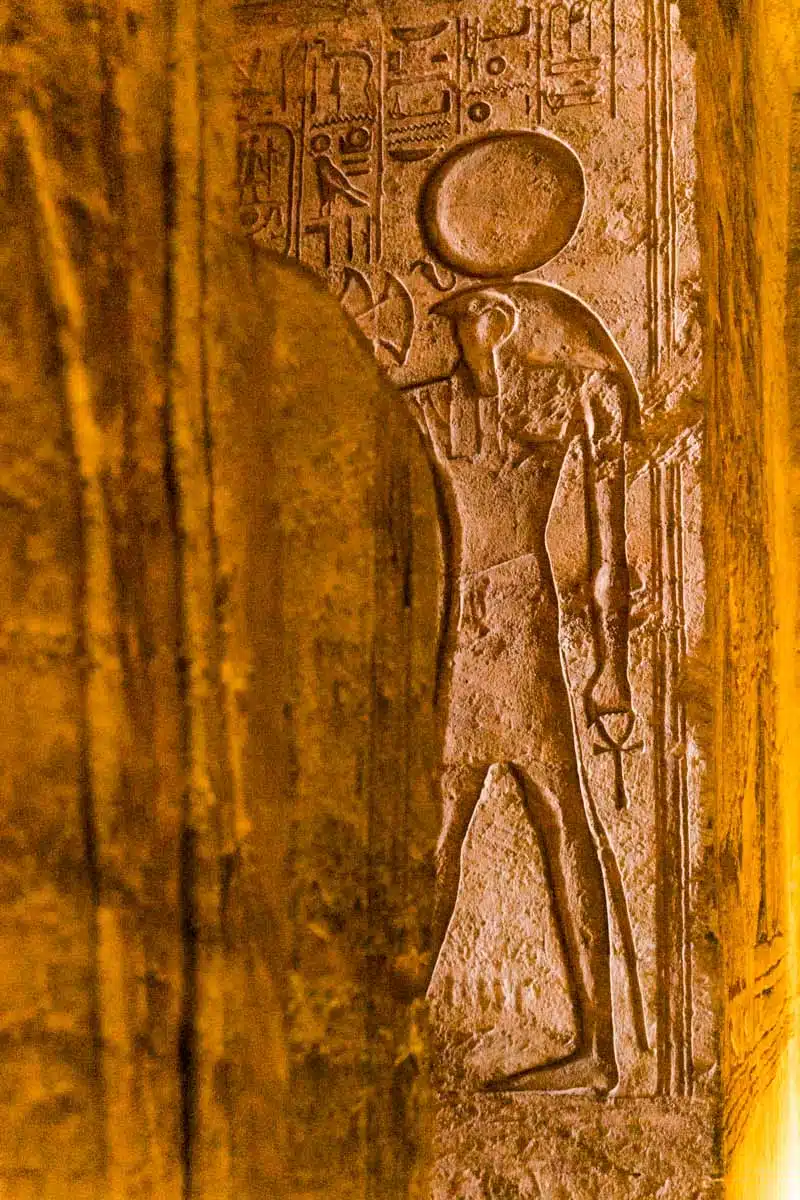
- If you can, try and time your visit to coincide with the biannual Sun Festival that takes place on the 22nd of February and October each year. During the festival, the sunlight pierces inside the temple into the shrine at the back, illuminating three of the four gods within – but leaving the god of the underworld Ptah, in shadow.
Address
Great Temple of Ramses II, Abu Simbel, Aswan Governorate 1211501, Egypt
Opening Times
5 am to 6 pm, seven days a week
How to Visit Independently
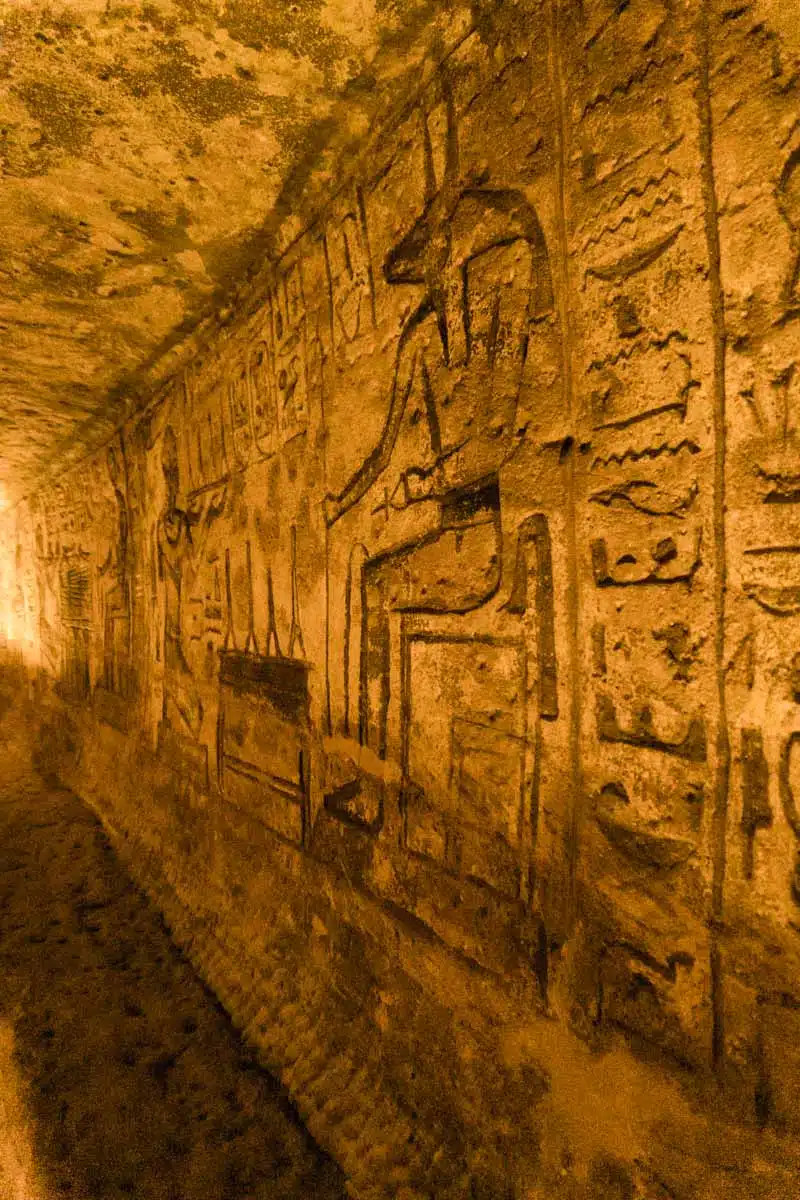
You can reach Abu Simbel from Aswan by air or road. Flights are approximately 45 minutes each way, and a free shuttle bus transfers you to and from the temples from Abu Simbel airport. Flights cost between £50 to £120 ($60 to $145)
If you choose to drive or hire a private driver, the journey is about 290 km one way, taking between 2.5 and 3 hours.
Recommended Tours
Where to Stay
The Seti Abu Simbel Lake Resort sits a short walk from the Great Temple of Ramses II and offers stunning views of Lake Nasser. In addition, you can enjoy exploring the sumptuously landscaped gardens, stunning pool, and beautiful Nubian-style accommodation.
Alternatively, check all accommodation in Abu Simbel
Map
Read More Egypt Guides
- Incredible Things to do in Egypt
- Planning Your Visit to Abu Simbel
- Unmissable Things to do in Aswan
- The Ultimate Egypt Itinerary
Love This? Save and Share on Pinterest
